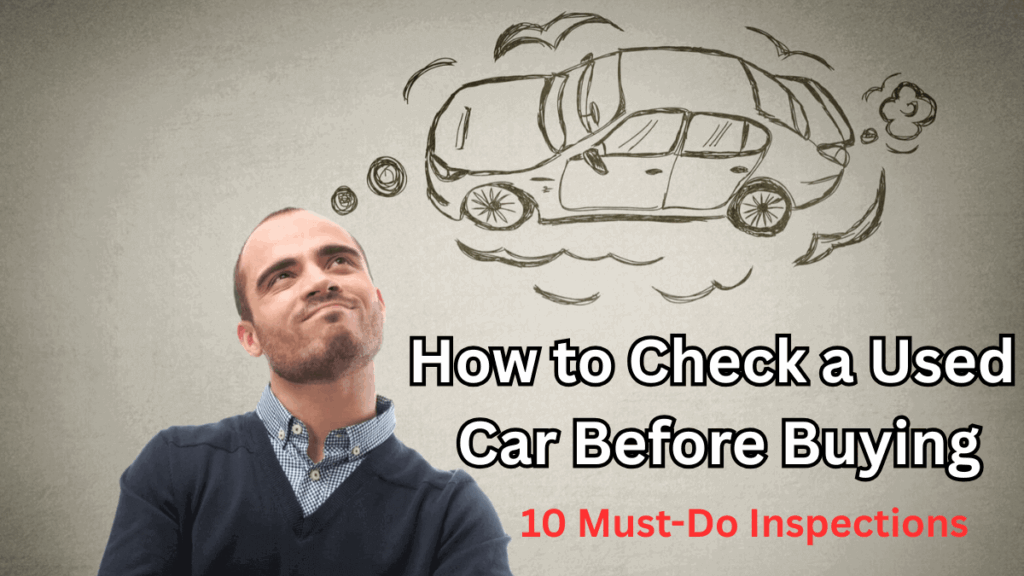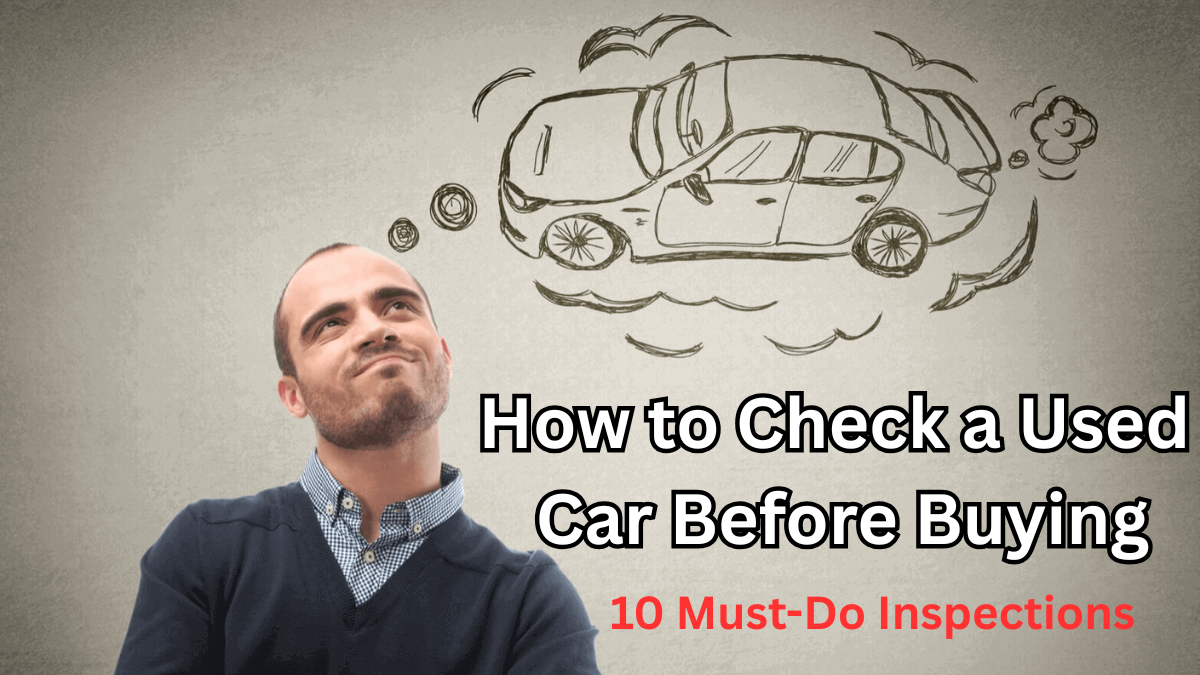Buying a second-hand car can be a smart financial move—but only if you do it right. Imagine driving home in what seems like a great deal, only to find out later that you bought a bundle of mechanical nightmares. That’s where this second-hand car guide comes in handy.
Whether you’re purchasing from a dealership or a private seller, knowing how to check used car condition before buying is essential. Let’s walk through 10 critical inspections that can help you avoid costly surprises down the road.

1. Start with the Exterior: Look Beyond the Shine
A freshly polished car can hide a lot of flaws. Pay close attention to:
-
Scratches, dents, and signs of rust
-
Misaligned body panels (could hint at past accidents)
-
Paint inconsistencies
-
Rust near wheel wells, door sills, and underneath the vehicle
| Checkpoint | What to Look For |
|---|---|
| Paint & Finish | Scratches, mismatched panels |
| Body Alignment | Gaps between doors and panels |
| Underbody Rust | Corrosion under wheel arches |
2. Check the Tires: Tread Talks
Your tires can reveal how the car’s been treated.
-
Uneven tire wear = potential alignment issues
-
Bald tires = neglect
-
Mismatched tires = possible replacement after accident
3. Pop the Hood: Engine & Fluids Matter
Open up the hood and take a good look:
-
Oil Level & Color: Dirty or low oil can indicate neglect
-
Coolant: Should be bright and filled to the line
-
Leaks: Any wet or greasy spots may suggest engine trouble
-
Belts & Hoses: Cracks or frays mean they need replacing
4. Test the Lights & Electronics
A quick switch flip can save you a lot later:
-
Headlights, brake lights, and turn signals
-
Power windows and locks
-
A/C, heater, and defrosters
-
Infotainment system, USB ports, and dashboard lights
5. Inspect the Interior: More Than Just Looks
The cabin tells a story about the car’s life.
-
Stains or tears in the seats
-
Water damage under floor mats (could indicate leaks)
-
Odors (mold = possible water entry or AC issues)
-
Check all seatbelts, buttons, and switches
| Interior Elements | What to Look For |
|---|---|
| Seats & Upholstery | Rips, tears, cigarette burns |
| Smell | Musty odors or air fresheners hiding issues |
| Dash Controls | All buttons and features work |
6. Don’t Skip the Suspension Check
Push down on each corner of the car. It should bounce once and settle.
-
Multiple bounces = worn shocks
-
Strange noises over bumps = possible suspension problems
7. Review the Vehicle History Report
Always ask for:
-
Service records
-
Accident history
-
Ownership details
-
Title status (avoid salvage titles)
Use trusted platforms like Carfax or AutoCheck for a full report.
8. Take It for a Thorough Test Drive
This is your chance to get the full experience.
What to Observe:
-
Smooth acceleration
-
Brake responsiveness
-
Transmission shifts
-
Any unusual noises, vibrations, or smells
9. Check the Odometer for Mileage Consistency
-
Average mileage is about 12,000–15,000 miles per year
-
Too low? Might have been tampered with
-
Too high? Be ready for maintenance
10. Get It Inspected by a Mechanic
Even if everything seems fine, a professional mechanic can uncover hidden issues.
-
Costs around $100–$200
-
Worth it for peace of mind
-
Gives you leverage for negotiating
Quick Recap: 10 Things to Inspect Before Buying a Used Car
| Inspection Area | Key Points to Check |
|---|---|
| Exterior | Scratches, rust, panel gaps |
| Tires | Tread wear, alignment issues |
| Engine Bay | Leaks, fluid levels, hose conditions |
| Lights & Electronics | Full functionality |
| Interior | Upholstery, smell, dashboard controls |
| Suspension | Bounce test, road comfort |
| History Report | Accidents, maintenance, title status |
| Test Drive | Engine smoothness, brakes, odd sounds |
| Odometer | Mileage verification |
| Mechanic Inspection | Expert review before final decision |
FAQs
1. How do I know if the used car I’m buying is in good condition?
Check the car’s exterior, interior, engine, suspension, and take it for a test drive. Also, review its service history and get a professional inspection.
2. Is it okay to buy a second-hand car without a mechanic’s inspection?
It’s risky. While you can perform a basic check yourself, only a certified mechanic can spot issues hidden beneath the surface.
3. What are red flags when checking a used car?
Red flags include rust, inconsistent paint, engine oil leaks, odd noises during a test drive, and missing paperwork.
4. How can I check used car condition before buying if I’m not a car expert?
Follow a reliable second-hand car guide like this one, and always bring along someone knowledgeable or hire a mechanic for a pre-purchase inspection.
Click here to learn more
